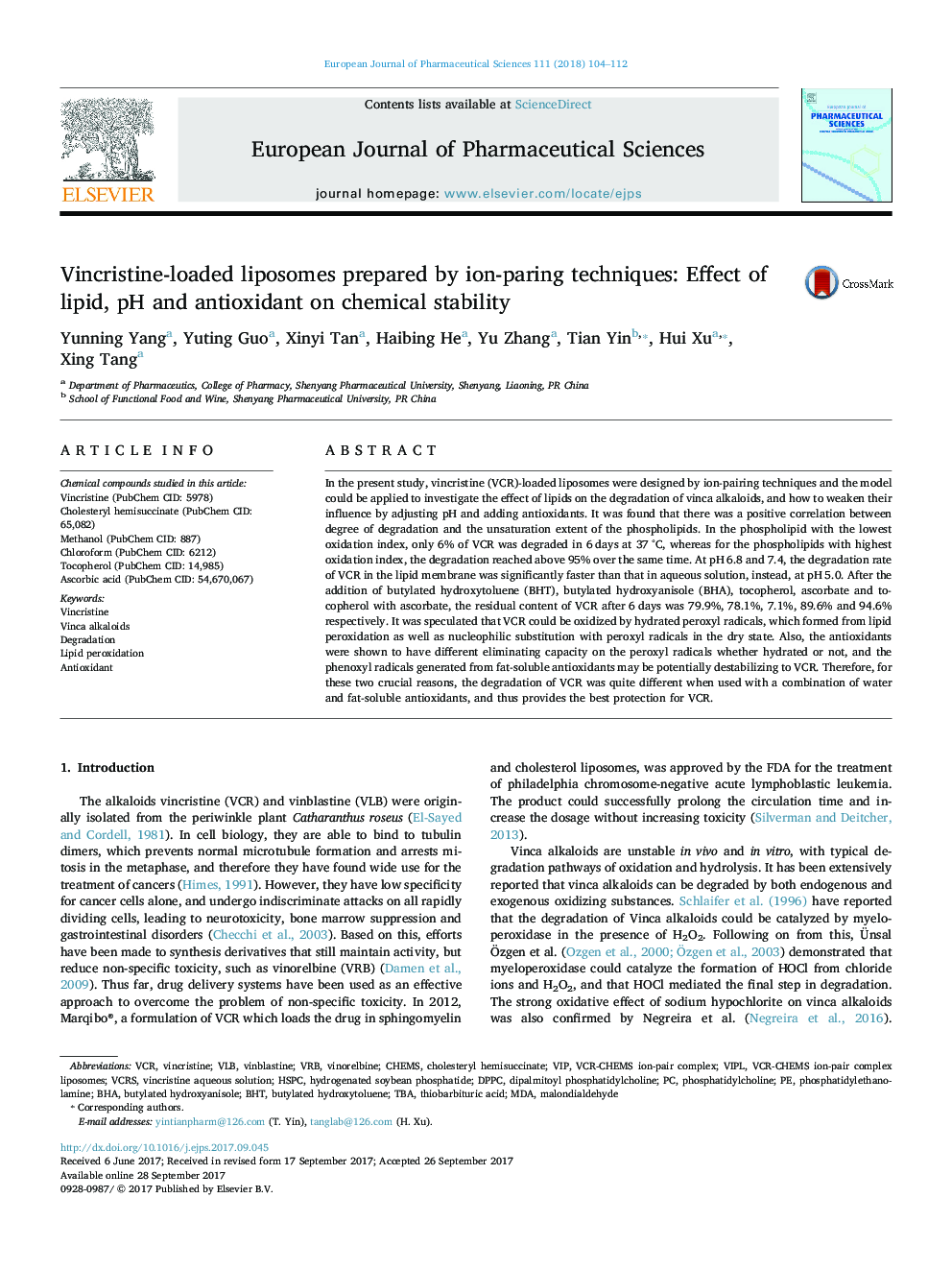| Article ID | Journal | Published Year | Pages | File Type |
|---|---|---|---|---|
| 5547501 | European Journal of Pharmaceutical Sciences | 2018 | 9 Pages |
In the present study, vincristine (VCR)-loaded liposomes were designed by ion-pairing techniques and the model could be applied to investigate the effect of lipids on the degradation of vinca alkaloids, and how to weaken their influence by adjusting pH and adding antioxidants. It was found that there was a positive correlation between degree of degradation and the unsaturation extent of the phospholipids. In the phospholipid with the lowest oxidation index, only 6% of VCR was degraded in 6 days at 37 °C, whereas for the phospholipids with highest oxidation index, the degradation reached above 95% over the same time. At pH 6.8 and 7.4, the degradation rate of VCR in the lipid membrane was significantly faster than that in aqueous solution, instead, at pH 5.0. After the addition of butylated hydroxytoluene (BHT), butylated hydroxyanisole (BHA), tocopherol, ascorbate and tocopherol with ascorbate, the residual content of VCR after 6 days was 79.9%, 78.1%, 7.1%, 89.6% and 94.6% respectively. It was speculated that VCR could be oxidized by hydrated peroxyl radicals, which formed from lipid peroxidation as well as nucleophilic substitution with peroxyl radicals in the dry state. Also, the antioxidants were shown to have different eliminating capacity on the peroxyl radicals whether hydrated or not, and the phenoxyl radicals generated from fat-soluble antioxidants may be potentially destabilizing to VCR. Therefore, for these two crucial reasons, the degradation of VCR was quite different when used with a combination of water and fat-soluble antioxidants, and thus provides the best protection for VCR.
Graphical abstractDownload high-res image (181KB)Download full-size image
